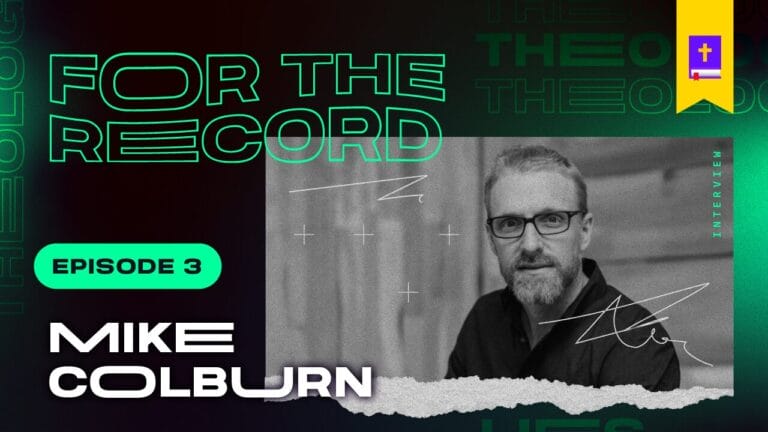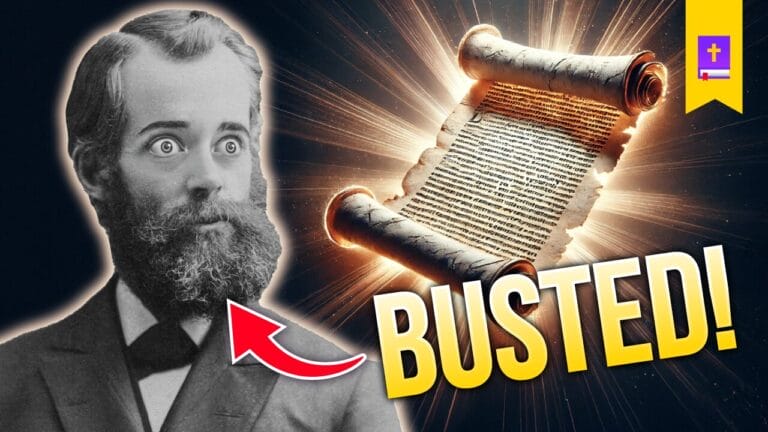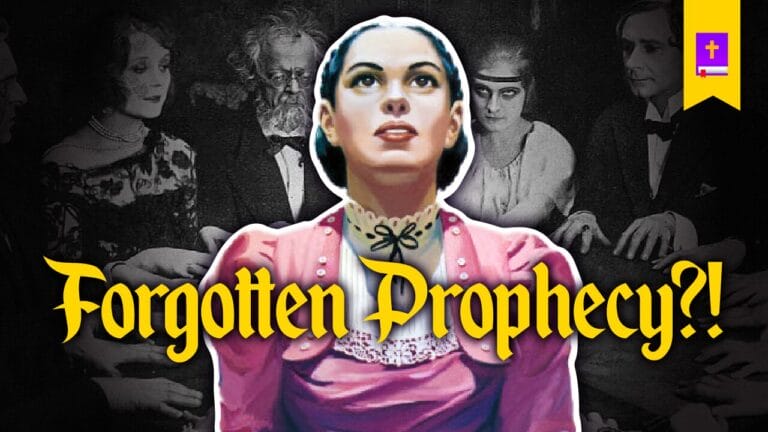When the test comes, it will be clearly shown what the mark of the beast is. It is the keeping of Sunday.
SDA Bible Commentary, Vol. 7, pg. 980
The Seventh-Day Adventist Church teaches that the Mark of the Beast will eventually be ceasing from labor and worshiping on Sunday (which they call the “papal sabbath”) after a national—turned international—Sunday law is passed mandating that everyone worship and rest on Sunday’s. This law will supposedly come at the behest of a “threefold union” between the Roman Catholic Papacy, Apostate Protestantism, and Spiritualism.
As Ellen G. White, the SDA Church’s prophetess, writes in Evangelism:
The change of the Sabbath is the sign or mark of the authority of the Romish church. Those who, understanding the claims of the fourth commandment, choose to observe the false sabbath in the place of the true, are thereby paying homage to that power by which alone it is commanded. The mark of the beast is the papal sabbath, which has been accepted by the world in the place of the day of God’s appointment.
Ellen G. White, Evangelism, pg. 234 (EV 234.1)
This alleged “threefold union” between Roman Catholicism, “Apostate Protestantism,” and Spiritualism is working in union with one another to legislate the “papal sabbath,” starting in America, eventually spreading to the entire world.
To secure popularity and patronage, legislators will yield to the demand for a Sunday law. By the decree enforcing the institution of the papacy in violation of the law of God our nation will disconnect herself fully from righteousness. We must take a firm stand that we will not reverence the first day of the week as the Sabbath, for it is not the day that was blessed and sanctified by Jehovah, and in reverencing Sunday we should place ourselves on the side of the great deceiver.
Ellen G. White, Last Day Events, pg. 132-3 (LDE 132.4)
She continues by saying:
If the light of truth has been presented to you, revealing the Sabbath of the fourth commandment, and showing that there is no foundation in the Word of God for Sunday observance, and yet you still cling to the false sabbath, refusing to keep holy the Sabbath which God calls ‘My holy day,’ you receive the mark of the beast. When does this take place? When you obey the decree that commands you to cease from labor on Sunday and worship God, while you know that there is not a word in the Bible showing Sunday to be other than a common working day, you consent to receive the mark of the beast, and refuse the seal of God.
Ellen G. White, Evangelism, pg. 235 (EV 235.2)
This is to say that they teach that if one hears what they believe to be the truth about the sabbath and rejects it—after the legislation of this Sunday law—that person has chosen to side with Satan and reject the truth. Thus, they are in disobedience to God and receive the Mark of the Beast—the Beast in their view being the Papacy and Roman Catholic Church.
Once this happens, Adventist’s will have to take a stand for the seventh-day Sabbath and be prepared to be hunted down globally for their refusal to observe this law:
The whole world is to be stirred with enmity against Seventh-day Adventists because they will not yield homage to the papacy by honoring Sunday, the institution of this antichristian power….As the Sabbath has become the special point of controversy throughout Christendom and religious and secular authorities have combined to enforce the observance of the Sunday, the persistent refusal of a small minority to yield to the popular demand will make them objects of universal execration.
Ellen G. White, Last Day Events, pg. 132 (LDE 132.4)
To support this, you will often hear them point to Daniel 2:13 and claim the “death decree” that was sent forth in Daniel’s day has eschatological foreshadowings of what is to come at the end of time—the Adventist church represented by Daniel and his friends (the wise and obedient to God) and the rest of the world represented by those attacking them (the disobedient wicked).
The primary issue in this discussion is explaining to Adventists that Christian’s are not universally in disobedience for going to church and worshiping on Sunday like the SDA Church claims.
The Bible nowhere says anything about a national Sunday law or the Mark of the Beast having anything to do with which day someone worships or rests in conjunction with a law headed up by the Papacy. This is strictly inserting Ellen G. White’s claims into Revelation 13, which the SDA Church claims are divinely inspired and correct inaccurate interpretations of scripture.
Within Adventism, their theology is seen as impenetrable—especially their eschatology. Part of the SDA Church’s belief about itself is that they were given a special insight into Bible prophecy that no one else has and they are to share it with the world. In his book Father Miller’s Daughter, Donald Casebolt notes how this mindset was inherited from the Millerite movement:
[William] Miller claimed that he only used his Bible and a concordance, that he had set aside all commentaries, and that in divinely inspired dreams God had commissioned him to proclaim his fifteen proofs to the entire world. Father Miller’s spiritual daughter, Ellen Harmon [White], accepted Miller’s self-conception at face value. Then she enhanced and disseminated Miller’s system and self-perception, going so far as to claim that Father Miller had been prefigured by Elijah, Elisha, John the Baptist, and that God had given Miller individualized, divine insight into prophecies that had been shrouded in mystery for centuries.
Donald Casebolt, Father Miller’s Daughter, Preface xi
Miller’s spiritual daughter, upon assuming the prophetic role of God’s special Messenger, perpetuated this hagiographical conception of Miller. More importantly, she endorsed his nonliteral methodology. As a result, the church that Ellen White founded retained the vestigial remains of many of Miller’s purported proofs as well as his nonliteral methodology—all the while imagining that Miller’s method was literal and commonsense.
The reality is, the SDA Church is in the same boat everyone else is yet they think they have been given an inspired commentator who gives them the correct interpretations with absolute certainty—hence why they are so dogmatic. But at the end of the day, they simply have an interpretation (a flawed one at that) just like everyone else does.
There are multiple schools of eschatology and, depending on which one you adhere to, that will impact your interpretation around the Mark of the Beast. It’s important to understand that Revelation had application to the original audience it was written to in the first century, not just people thousands of years into the future. John’s original audience would have had to have been able to read the Revelation and apply what was written to them in their day. This doesn’t mean it has no application to us today, but it isn’t exclusively for a people thousands of years removed from the original audience.
On this ground alone the Adventist theory falls flat.
We are of the belief that the Mark of the Beast had immediate connection to the Roman empire of the first century. John’s reference to the mark being placed upon the hand or the forehead makes perfect sense in light of the widespread first century practice of branding slaves—which was a mark of shame and subjugation. This would have been the application of the text to the seven churches John was penning the Revelation to. But this does not mean there is not also a wider application to all Christians in all ages.
In his commentary on Revelation, theologian G.K. Beale notes this where, commenting on Revelation 13:17, he writes:
The demand that everyone receive “a mark on their right hand or on their forehead” could be an allusion to the ancient practice of branding or tattooing disobedient slaves, soldiers (Plutarch, Pericles 26; Herodotus 7.233), and loyal devotees of gods of various religions (Lucian, De Syria Dea 59; Herodotus 2.113). If branding of slaves is in mind here, then the beast’s worshipers are seen as his property. If branding of soldiers or of religious devotees is in view, the worshipers are seen as his faithful followers.
Those not submitting to receiving the mark are unable to “buy or sell.” This is in reference back to Revelation 2:9 and 6:5-6, where it is said that economic measures are directed against Christians. In 2:9 Christians are said to be materially “poor” because of their refusal to pay homage to trade guild deities and to Caesar’s image (see Revelation 2:9-11, 14, 20-21). Persecution and even martyrdom for Christians would continue after John’s time (Eusebius, H.E. 5.1.56). In the new creation saints will be freed from such oppression (Revelation 7:16-17).
χάραγμα (“mark”) was used of the emperor’s seal on business contracts and the impress of he Roman ruler’s head on coins. If this background is in mind in Revelation 13, then it enforces the metaphorical idea that the mark alludes to the state’s political and economic “stamp of approval,” given only to those who go along with its religious demands.
G.K. Beale, The New International Greek Testament Commentary: The Book of Revelation, pg. 715
Dr. Beale continues where he explains how this text has application to all Christians in all ages:
Since the seal or name on the true believer is invisible, so also is the “mark” on the unbeliever. That the two are parallel in being spiritual in nature and are intended to be compared is evident from the immediately following mention of God and Christ’s name “written on the foreheads” of the saints (Revelation 14:1). Those who have believed in Jesus have been identified with him and are protected by the power of his name against ultimate deception. His name is none other than his very presence with them (Revelation 22:4). Their refusal to identify with the beast will result in suffering and even death, but they will have the ultimate reward of eternal life (Revelation 20:4). Those not trusting in Christ are identified with the beast, are under the devil’s power, and are unable to avoid deception by the beast (Revelation 2:17). While identification with the beast gives them temporary prosperity in this life, they will ultimately be punished with eternal death (Revelation 14:9-11).
The mark may also connote that the followers of Christ and the beast both are stamped with the image (i.e., character) of their respective leaders. Regardless of what precise historical identifications can be given to the mark, the primary focus is on spiritual identification with the Satanic beast.
G.K. Beale, The New International Greek Testament Commentary: The Book of Revelation, pg. 716
This is to say that the Mark of the Beast is not only one specific thing at one specific moment in human history. It is bowing down to the world over and against submitting to Jesus Christ as Lord—something all people in all generations must make a decision to do. Those that repent and believe the gospel are given the seal of God—the Holy Spirit (Ephesians 1:13). Those that don’t will remain dead in their sins and trespasses (Ephesians 2:1, 5; Colossians 2:13), loyal to the Satanic, worldly, beast system, and will receive its mark.
If you have been born again and are united to Christ you need not fear or worry about the Mark of the Beast. God will not leave you nor forsake you and will keep you from deception. If you haven’t believed, today is the day of salvation (2 Corinthians 6:2). Turn to Christ and receive him!










